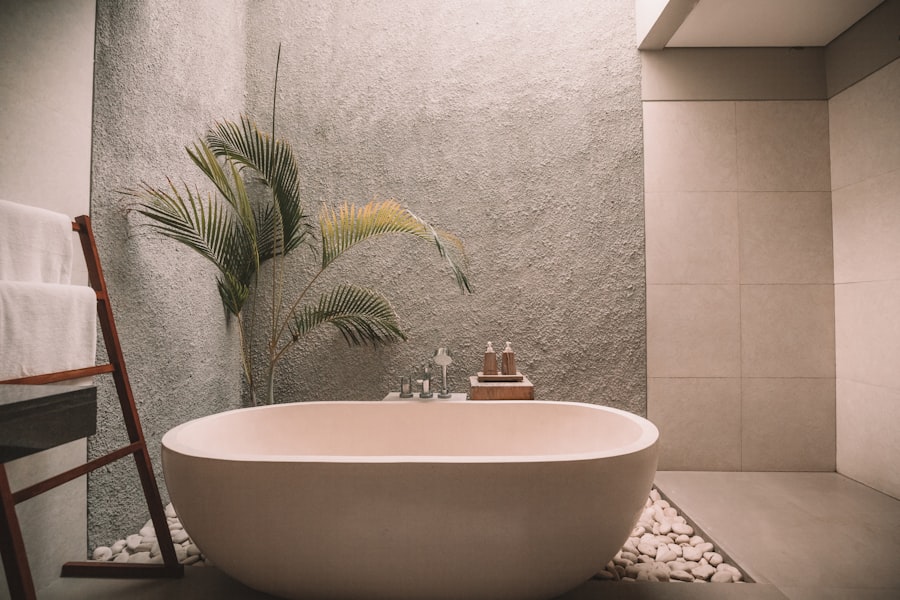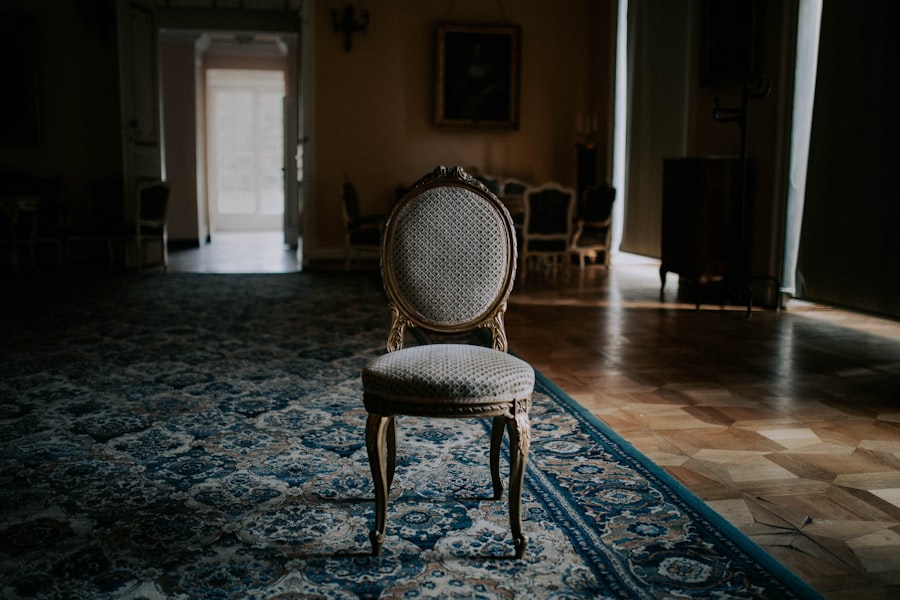Interior styling is an art form that transcends mere decoration; it is a meticulous process that involves curating spaces to reflect the personality and lifestyle of the inhabitants. At its core, interior styling is about creating a cohesive aesthetic that harmonizes with the architecture of a space while also serving its functional needs. This discipline requires a keen eye for detail, an understanding of spatial dynamics, and a deep appreciation for design principles.
Unlike interior design, which often involves structural changes and renovations, interior styling focuses on the arrangement of furniture, selection of accessories, and the overall ambiance of a room. The process begins with an assessment of the existing space, taking into account factors such as light, layout, and the intended use of the area. A successful interior stylist will consider how each element interacts with others, ensuring that the final look is not only visually appealing but also practical.
For instance, in a small living room, a stylist might choose to use multi-functional furniture that maximizes seating while minimizing clutter. The goal is to create an environment that feels both inviting and functional, allowing for ease of movement and comfort.
Key Takeaways
- Interior styling involves arranging and decorating a space to create a visually appealing and functional environment.
- Cultural influences can be incorporated into interior styling through the use of traditional patterns, materials, and artwork.
- Maximizing space in interior styling involves clever storage solutions, multifunctional furniture, and strategic layout planning.
- Color and texture play a crucial role in enhancing interior styling by adding visual interest and creating a cohesive look.
- Sustainable and eco-friendly elements can be incorporated into interior styling through the use of natural materials, energy-efficient lighting, and eco-conscious furniture choices.
Incorporating Cultural Influences in Interior Styling
Infusing Spaces with Cultural Flair
For example, incorporating Moroccan lanterns or textiles can infuse a room with warmth and exotic flair, while Japanese minimalism can promote tranquility and simplicity. Each cultural element adds depth and character, transforming a generic space into one that resonates with personal history and global influences.
Expressing Cultural Influences through Design Elements
Moreover, cultural influences can be expressed through color palettes, patterns, and materials. A stylist might choose to blend Scandinavian design’s emphasis on functionality with vibrant African prints to create a dynamic yet harmonious space.
Celebrating Diversity and Cultural Heritage
This fusion not only celebrates diversity but also encourages dialogue about the significance of cultural heritage in contemporary design. By thoughtfully selecting pieces that reflect different traditions, interior stylists can craft spaces that are not only visually stunning but also rich in meaning.
Maximizing Space with Interior Styling

Maximizing space is a critical consideration in interior styling, particularly in urban environments where square footage is often limited. Effective styling techniques can transform cramped quarters into open, airy havens. One common approach is to utilize vertical space by incorporating tall bookshelves or wall-mounted storage solutions.
This strategy draws the eye upward, creating an illusion of height while providing ample storage for books and decorative items. Additionally, mirrors can be strategically placed to reflect light and create a sense of depth, further enhancing the perception of space. Another effective method for maximizing space is through the use of multifunctional furniture.
For instance, a coffee table that doubles as storage or an ottoman that can serve as extra seating can significantly reduce clutter while maintaining functionality. Open floor plans can also benefit from defined zones created through area rugs or furniture arrangement, allowing for distinct areas for relaxation, work, or dining without the need for physical barriers. By employing these techniques, interior stylists can ensure that every square inch is utilized effectively while maintaining an aesthetically pleasing environment.
Using Color and Texture to Enhance Interior Styling
Color and texture are fundamental components of interior styling that can dramatically alter the mood and perception of a space. The choice of color palette sets the tone for an entire room; warm hues like reds and oranges can evoke feelings of energy and warmth, while cool tones such as blues and greens promote calmness and serenity. A well-thought-out color scheme can create visual harmony or contrast, depending on the desired effect.
For example, pairing soft pastels with bold accents can create a playful yet sophisticated atmosphere. Texture adds another layer of depth to interior styling, enriching the sensory experience of a space. Combining various materials—such as smooth glass, rough wood, soft fabrics, and metallic finishes—can create visual interest and tactile variety.
A living room might feature a plush velvet sofa paired with a sleek glass coffee table and woven throw pillows, inviting both comfort and elegance. The interplay between different textures not only enhances the aesthetic appeal but also contributes to the overall ambiance, making spaces feel more inviting and lived-in.
Incorporating Sustainable and Eco-Friendly Elements in Interior Styling
In recent years, there has been a growing emphasis on sustainability within interior styling. As awareness of environmental issues increases, many stylists are seeking ways to incorporate eco-friendly elements into their designs. This can involve selecting furniture made from reclaimed wood or using non-toxic paints and finishes that minimize harmful emissions.
By prioritizing sustainable materials, interior stylists can create beautiful spaces that are also mindful of their ecological impact. Additionally, incorporating plants into interior styling serves both aesthetic and environmental purposes. Indoor greenery not only enhances air quality but also adds life and vibrancy to any room.
From large potted plants to small succulents on windowsills, greenery can soften hard edges and introduce organic shapes into a space. Furthermore, choosing locally sourced decor items reduces carbon footprints associated with transportation while supporting local artisans and businesses. By embracing sustainability in their work, interior stylists contribute to a more responsible approach to design.
Creating a Relaxing and Tranquil Atmosphere with Interior Styling

Creating a relaxing and tranquil atmosphere is often a primary goal in interior styling, particularly in spaces designated for rest and rejuvenation such as bedrooms or meditation areas. To achieve this serene environment, stylists often focus on soft color palettes that evoke calmness—think muted blues, gentle greens, or warm neutrals. These colors can be complemented by soft furnishings like plush rugs, cozy blankets, and comfortable seating arrangements that invite relaxation.
Lighting also plays a crucial role in establishing tranquility within a space. Natural light is ideal; however, when that is not possible, layered lighting solutions can create a soothing ambiance. Soft overhead lights combined with table lamps or floor lamps featuring warm bulbs can help achieve this effect.
Additionally, incorporating elements such as water features or calming artwork can further enhance the peaceful atmosphere. By thoughtfully considering these aspects of design, interior stylists can craft spaces that promote relaxation and well-being.
Interior Styling for Different Room Types
Each room in a home serves a unique purpose and requires tailored styling approaches to meet its specific needs. For instance, living rooms are often designed for social interaction and entertainment; therefore, they should be styled to encourage conversation and comfort. This might involve arranging seating in a circular formation around a central coffee table or incorporating versatile furniture that accommodates guests without overwhelming the space.
In contrast, bedrooms prioritize restfulness and personal retreat. Here, the focus may shift towards creating an intimate atmosphere through soft textiles, calming colors, and minimal clutter. A well-styled bedroom might feature layered bedding for comfort alongside personal touches like framed photographs or cherished mementos that reflect the occupant’s personality.
Kitchens require functionality alongside aesthetics; thus, they should be styled with practical storage solutions while still maintaining an inviting appearance through decorative elements like colorful dishware or fresh herbs on windowsills.
Hiring a Professional Interior Stylist in Dubai
In Dubai’s vibrant real estate market, hiring a professional interior stylist can be an invaluable investment for homeowners looking to elevate their living spaces. The city boasts a diverse array of architectural styles influenced by various cultures; thus, an experienced stylist can navigate these complexities to create cohesive designs that resonate with both local traditions and contemporary trends. A professional brings expertise in spatial planning, color theory, and material selection—skills that are essential for achieving a polished look.
Moreover, working with an interior stylist allows homeowners to save time and avoid the stress associated with design decisions. A stylist will conduct thorough consultations to understand the client’s vision while providing insights into current trends and timeless design principles. They can source unique furnishings and decor items that align with the client’s aesthetic preferences while ensuring that every element works harmoniously within the overall design scheme.
In Dubai’s competitive market where luxury meets innovation, enlisting the help of an interior stylist can transform any space into a stunning reflection of personal style and sophistication.
If you are looking to upgrade your office space in Dubai, consider investing in executive desks. These high-quality desks not only add a touch of sophistication to your workspace but also provide functionality and comfort for your employees. To learn more about how executive desks can enhance your office interior styling in Dubai, check out this informative article on
